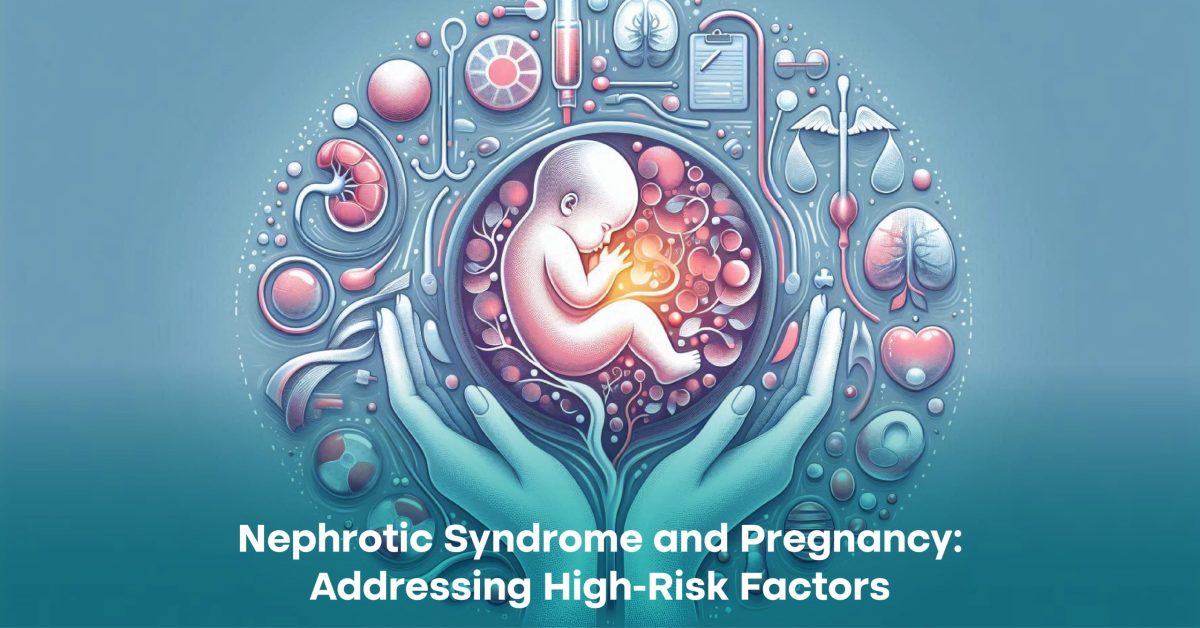Management strategies for Nephrotic Syndrome in pregnancy
Management of nephrotic syndrome in pregnant women involves thorough and multi-dimensional approaches that play between the needs of the mother and those of the baby. Methods to prevent the complications of nephrotic syndrome in pregnant women are mostly medical-mental and integrative through lifestyle change with close follow-up and monitoring.
Thromboprophylaxis
Anticoagulation therapy is very much warranted in pregnant women with nephrotic syndrome, as the latter significantly risks developing thromboembolism. Careful choice, however, is observed when choosing the anticoagulant; usually, low molecular weight heparin rather than warfarin, which can cross the placental barrier, is administered. Thromboprophylaxis needs to be initiated very early, and its response needs to be closely followed in order to avoid complications both on the maternal as well as on the fetal side.
Infection Prevention
Prevention of infections in pregnant women with nephrotic syndrome is highly significant. Immunoglobulin therapy with drugs such as VARIZIG for those exposed to varicella would help avoid risks. Also, vigilance and an eye on early urinary tract infection or other bacterial infections, which might exert an exacerbating influence on the symptoms of nephrotic syndrome during pregnancy, would be crucial.
Control of Blood Pressure
Management of blood pressure is another cornerstone in the treatment algorithm of a pregnant woman with nephrotic syndrome. In fact, preeclampsia and hypertension are very common complications for which close monitoring for maternal and fetal risks is essential. Therefore, antihypertensive agents, like methyldopa or labetalol, are the commonly used drugs of choice for pregnant women. However, due to the risk to the baby, drugs that block the renin-angiotensin system are usually avoided in pregnant patients with nephrotic syndrome.
Fluid and Electrolyte Management
Fluid and electrolyte management in the patient should be taken carefully, as diuretics could be administered not only to help manage oedema but also to prevent dehydration, disturbance of electrolytes, and reductions in perfusion to the placenta. Salt and fluid intake should be controlled as well, not to accelerate oedema and disturbances in blood pressure.
Close Monitoring of Fetal Development
Pregnant women with nephrotic syndrome should be followed up frequently to monitor the development of the baby and early manifestations of distress or growth restriction. Ultrasound scans can help in assessing the size of the fetus and the amniotic fluid index, and Doppler studies may be useful in the assessment of placental blood flow. Once any form of fetal growth restriction or other complications is identified, there might be a predisposition to deliver prematurely.
Multidisciplinary Care
A multidisciplinary team comprising of a nephrologist, obstetrician, and maternal-fetal medicine specialist can help provide a pregnant woman with nephrotic syndrome care that would be holistic. The close coordination among these specialists in managing the case ensures that any mother’s kidney function is followed closely and that pregnancy would be managed towards optimal outcomes. The team will further guide medication adjustment and watch for signs of worsening renal function or preeclampsia.
Conclusion
The complications arising from nephrotic syndrome in pregnancy are a bit specific, and patients with a high risk of thromboembolism, infection, renal dysfunction, and hypertension must be treated. Pregnant women with the disorder must be provided with meticulous management by various pharmacological treatments, changes in the lifestyle, and close follow-up. Healthcare providers can thus make a positive projection by being proactive with regard to both maternal and fetal risks, along with a holistic approach in the care of patients afflicted with nephrotic syndrome.
References
- Levin, M.J., Duchon, J.M., Swamy, G.K. and Gershon, A.A., 2019. Varicella zoster immune globulin (VARIZIG) administration up to 10 days after varicella exposure in pregnant women, immunocompromised participants, and infants: Varicella outcomes and safety results from a large, open-label, expanded-access program. PloS one, 14(7), p.e0217749.
- Gupta, S., Pepper, R.J., Ashman, N. and Walsh, S.B., 2019. Nephrotic syndrome: oedema formation and its treatment with diuretics. Frontiers in physiology, 9, p.1868.
- Weir, M.R., Lakkis, J.I., Jaar, B., Rocco, M.V., Choi, M.J., Kramer, H.J. and Ku, E., 2018. Use of renin-angiotensin system blockade in advanced CKD: an NKF-KDOQI controversies report. American Journal of Kidney Diseases, 72(6), pp.873-884.
- Lee, J.M., Kronbichler, A., Shin, J.I. and Oh, J., 2020. Review on long‐term non‐renal complications of childhood nephrotic syndrome. Acta Paediatrica, 109(3), pp.460-470.
- Lentine, K.L., Kasiske, B.L., Levey, A.S., Adams, P.L., Alberú, J., Bakr, M.A., Gallon, L., Garvey, C.A., Guleria, S., Li, P.K.T. and Segev, D.L., 2017. KDIGO clinical practice guideline on the evaluation and care of living kidney donors. Transplantation, 101(8S), pp.S7-S105.
